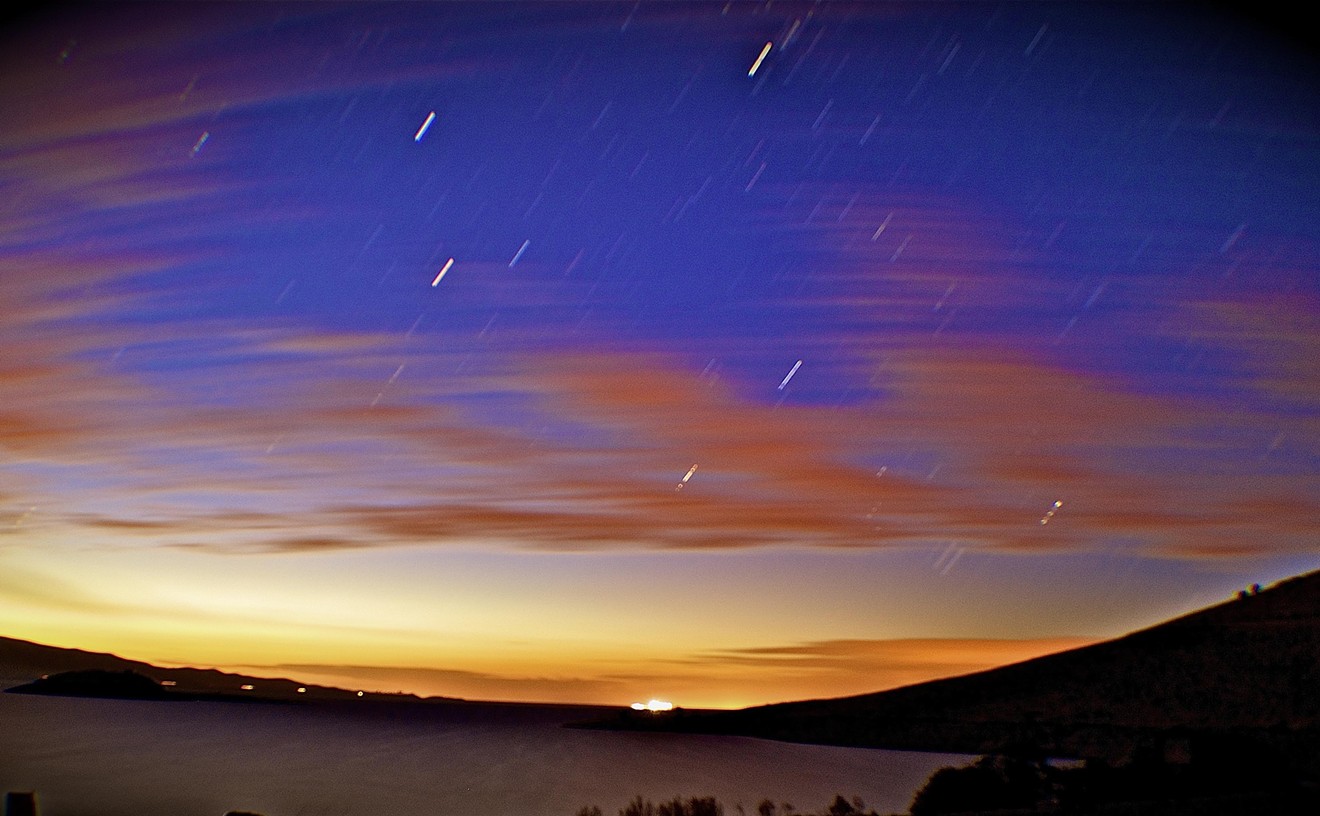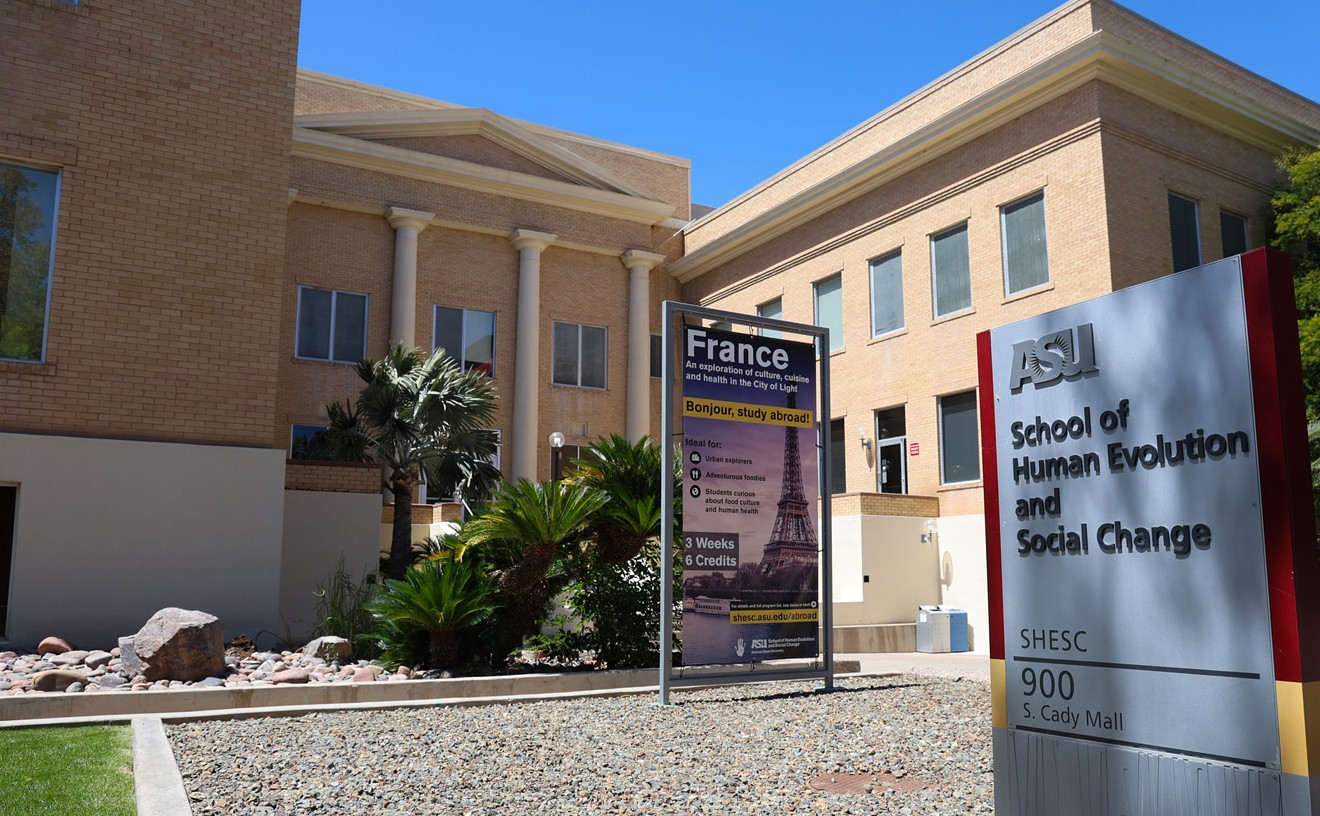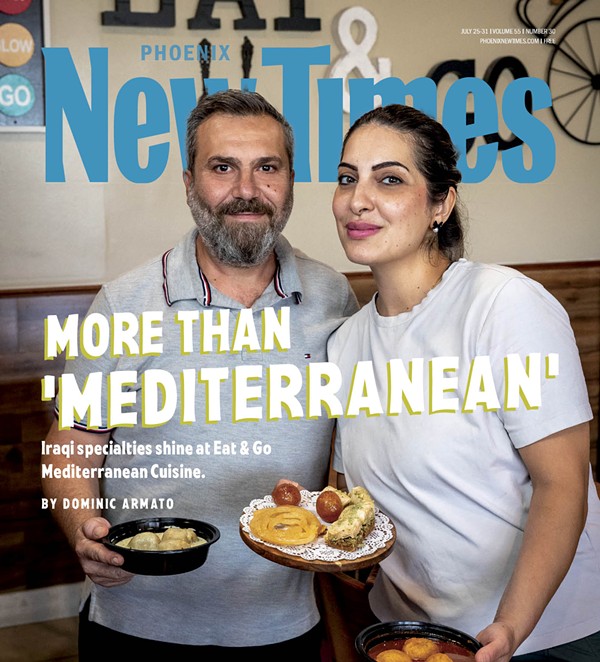
Sativa Peterson is the State of Arizona Research Library's news content program manager. “It means I’m a newspaper librarian.”
Robrt L. Pela
Peterson spoke from the bowels of the State of Arizona Research Library, where she works as the news content program manager. “It means I’m a newspaper librarian,” she explained. “I oversee our newspaper collection, the largest in the state. We have more than 700 titles.”
She said the library has two main goals: preservation of Arizona newspapers, and access to them. Most patrons of the library, located at 19th Avenue and Madison Street, want to look at old news on microfilm; there are more than 200,000 rolls of microfilm there. Many of these have been digitized, which allows readers to use search words and email articles to themselves.
“And then if you really want to see the physical newspaper, we can let you see it,” she clarified. “But only if it’s not already in bad shape and can still be handled.” Newspapers weren’t made to last, Peterson said. “They were printed on inexpensive paper; they ended up in the birdcage the next day. They weren’t really a format meant to be around forever.”
Before she worked at the library, it was the practice to microfilm the collected newspapers, then toss them. Today, the goal is to keep as much as can be stored in climate-controlled warehouses, and eventually to make all of it available online, where more people can engage with it.
She earned master’s degrees in journalism and library science, and thought the two subjects had curiosity and access in common. “Journalists are interested in discovering stories, and librarians like giving people access to information they wouldn’t otherwise have,” she said. “I get to do both of those here.”
Before coming to the library two years ago, Peterson worked as a freelance writer and as an archivist at ASU’s School of Film, Dance, and Theater. “But this is my dream job,” she said. She wore a heavy cotton lab coat, she said, because it was cold in the basement archive, but no rubber gloves to protect the periodicals. “A lot of these papers are so brittle that the fumbling of my hands in gloves can damage them more than if I wore gloves,” she explained.
Peterson held up a yellowing copy of a World War II-era weekly from Coolidge. “It says here that a group of inmates at the prisoner-of-war camp in Florence will be presenting a play called We the Feeble.” She thought about this for a moment. “Let’s hope it was a comedy.”
The collection offered a multifaceted look at Arizona’s past, Peterson believed. “We have papers from a wide political spectrum. Conservative, liberal, labor-relations.” She opened a large, bound book that smelled of old newsprint. “This is the Arizona Black Dispatch, one of the African-American publications. We only have it from 1976, but I’m hoping someone will donate more.”
People sometimes called to say they’d found an old newspaper and wanted Peterson to have it. “It’s really nice of them, but it’s usually one copy of something with a headline about JFK dying. I’m more interested in a run of something. Sometimes it’s only five issues of one obscure paper, but we want that.”
Peterson’s favorite section in any paper is the “about town” column, detailing who was sick with flu, whose mother-in-law was visiting from Akron, news of a dinner party held last Tuesday. “All the suburbs had their own papers back then, and they all had these columns,” she said. “Here’s a newspaper from Maryvale in 1958. This column is called Over the Back Fence, and it’s all about who did what last week. These were the Facebook status updates of their day.”
She walked between towering shelves of newspapers, carefully wrapped in brown butcher paper and marked with yellow sticky notes. “Just the titles are wonderful,” she mused. “The Phoenix Question Mark. South Mountain Star. The Christown News. The Phoenix Prognosticator. Really, who has heard of these? We have them all here.”
A woman named Laurie came around the corner. “I have a big pile of New Times to file,” she announced. “I don’t know where to put them.”
“Those are two rows over,” Peterson replied. “I just got 15 boxes of New Times, so just add those to the pile.”
She admitted that long-term storage is an issue. “I’m still collecting papers that are being published, but fewer are. More newspapers are sending me PDFs of their finished product these days. I’ll need more server space.”
Digitizing newspapers offers one more access point to the collection’s content. “Younger patrons expect a digital resource,” she said, then sighed. “They’re not going to come down here and use the microfilm reader.”
She pointed to a towering stack of bundles. “That’s the Phoenix Shopping News. We don’t just collect journalism. We have Ev Mecham’s paper, Spanish papers, an Italian paper, we even have one in Navajo. This one here is a newsletter out of Sunnyslope, done on a typewriter in 1945.”
Peterson straightened one of the yellow sticky notes.
“I’m a newspaper librarian, so I’m a nerd about these things,” she confided. “But when I look at these newspapers, I think about all the hidden labor that went into producing them. I think about how hard it was to get them delivered in Arizona’s early territorial days. I look at all the beautiful hand-drawn logos and the classified ads and I’m seeing more than just a bunch of headlines.”
She tugged her lab coat closed against the cold. “It’s really like we’re looking at the backbone of America.”











